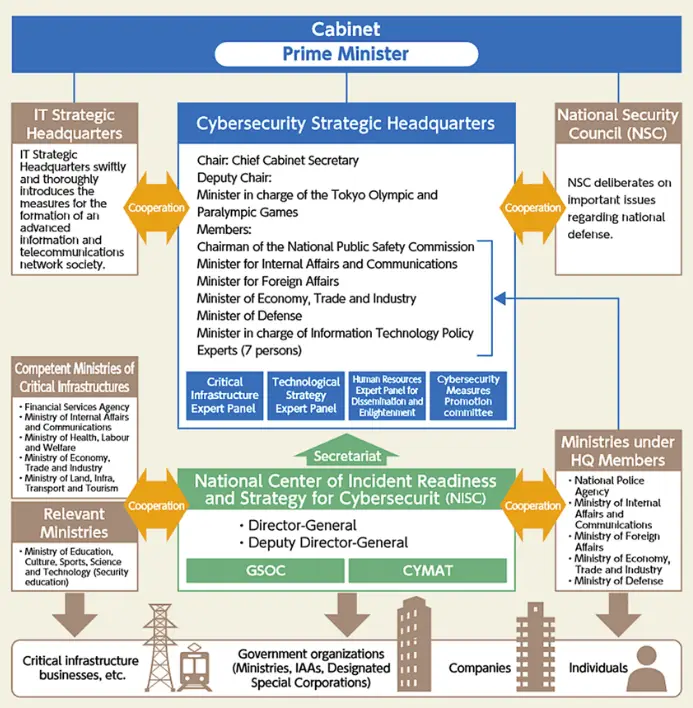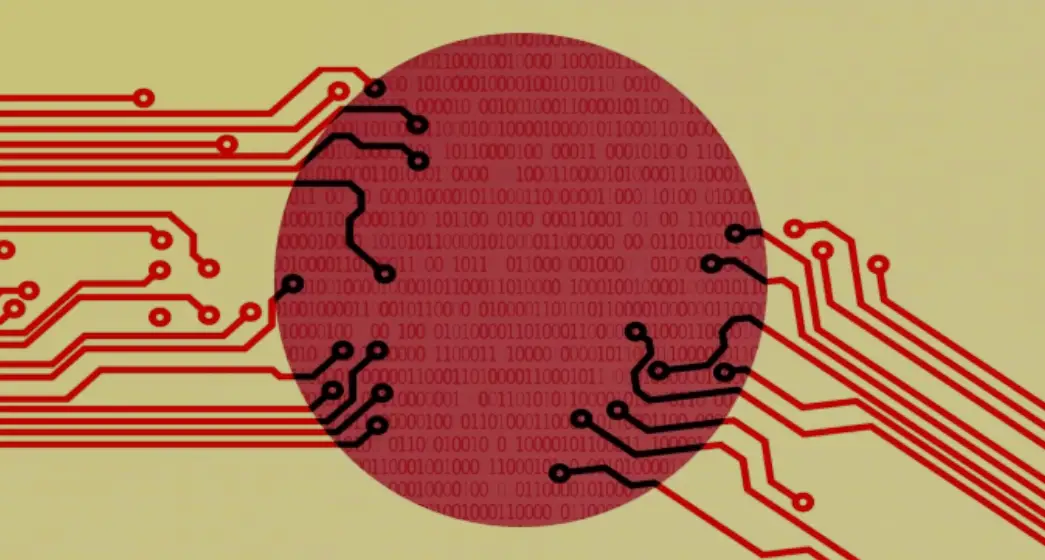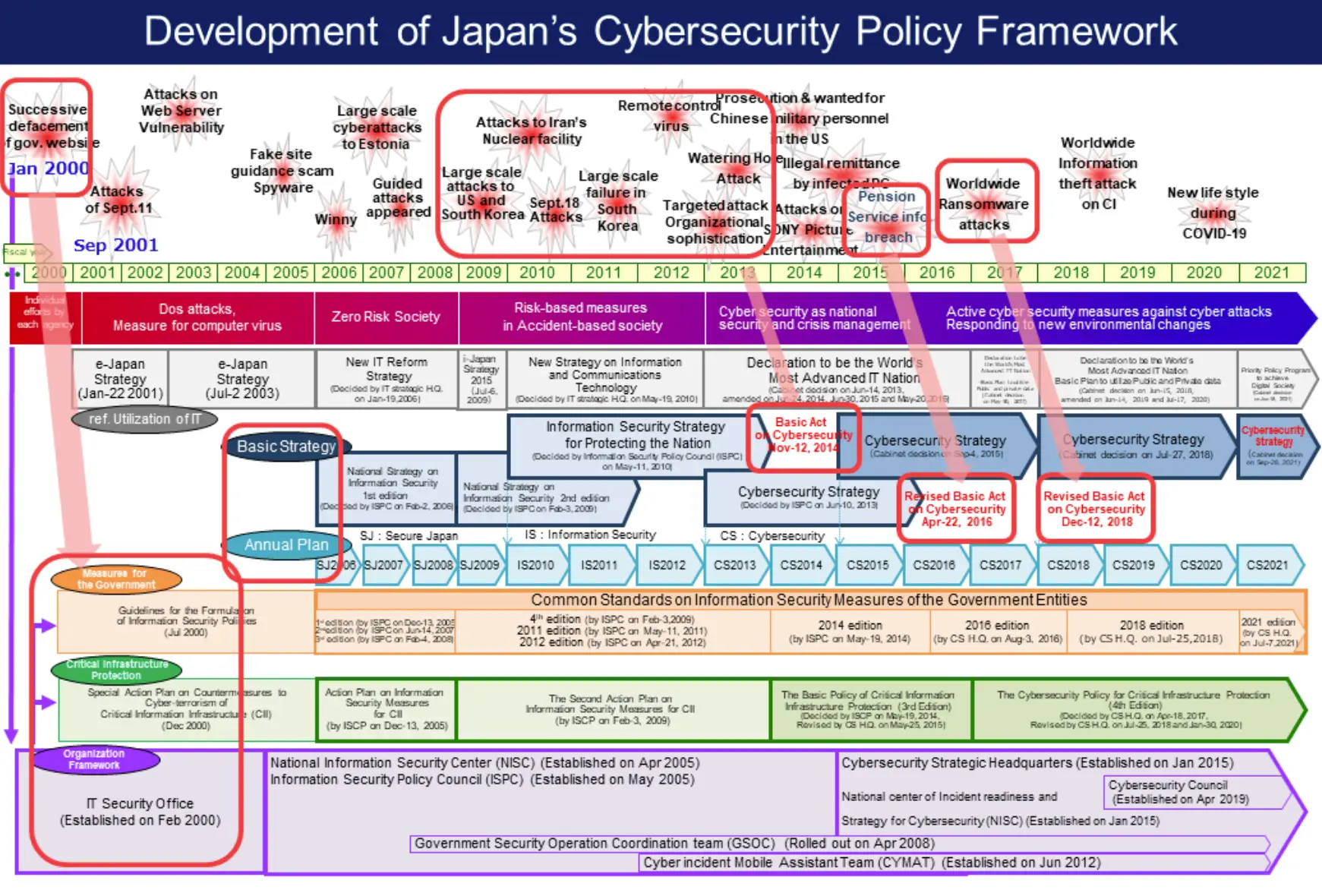Lessons from the Previous Administration
Japan’s evolving approach to cybersecurity represents a significant shift in its national defense strategy. Under the previous U.S. administration, Japan and the U.S. deepened their cybersecurity cooperation to counter growing threats from China, North Korea, and Russia. This collaboration reinforced the alliance’s ability to adapt and operate in a multi-domain security environment, where cyber threats increasingly intersect with conventional military and economic security challenges.
As the U.S. enters the next four years, the question arises: What policies and investments are needed to sustain U.S.-Japan cybersecurity readiness, competitiveness, and counterstrike capabilities while adhering to Article 9? We examine Japan’s key cybersecurity initiatives during the previous U.S. administration, their impact on Japan’s active cyber defense, and strategic recommendations for the future.
1. U.S.-Japan Cybersecurity Cooperation During the Previous Administration
1.1 Strengthening Intelligence Sharing and Threat Response
A key achievement of the previous U.S. administration was the expansion of real-time cyber threat intelligence sharing between Japan and the United States. This cooperation enhanced situational awareness and rapid response capabilities to mitigate cyberattacks.
-
The National Center of Incident Readiness and Strategy for Cybersecurity (NISC) in Japan deepened partnerships with U.S. agencies such as the Cybersecurity and Infrastructure Security Agency (CISA), National Security Agency (NSA), and U.S. Cyber Command.
-
The Japan-U.S. Cyber Dialogue facilitated policy-level coordination, ensuring that Japan’s cybersecurity posture aligned with U.S. doctrine.
-
The Indo-Pacific Quad Cybersecurity Partnership, launched under the previous U.S. administration, emphasized cybersecurity norms and resilience across the region.
1.2 Advancing Joint Cyber Exercises & Operational Readiness
To simulate large-scale cyberattacks on critical infrastructure and military networks, the previous U.S. administration increased the frequency and scale of joint cyber exercises:
-
CYBER FLAG and CYBER GUARD, led by U.S. Cyber Command, incorporated Japan into multi-domain cyber training to prepare for advanced threat scenarios.
-
Japan’s increased participation in Indo-Pacific Cybersecurity Exercises (IPCX) reflected its growing commitment to multilateral cyber defense strategies.
-
The 2023 Japan-U.S. Joint Cybersecurity Framework introduced under the previous administration set a roadmap for further interoperability in joint cyber defense operations.
1.3 Expanding Cybersecurity as a Pillar of Economic Security
The previous U.S. administration recognized cybersecurity as a critical component of economic security. Key initiatives included:
-
Strengthening Japan’s semiconductor supply chain security through partnerships in the CHIPS and Science Act.
-
Implementing U.S.-Japan cybersecurity workforce exchange programs to address Japan’s critical shortage of cyber professionals.
-
Expanding cooperation on post-quantum cryptography, AI-driven threat detection, and secure digital infrastructure.
2. Challenges and Gaps: What Needs to be Addressed in the Next Four Years?
While the previous U.S. administration made significant strides, several critical gaps remain. Addressing these issues will be crucial for sustaining U.S.-Japan cybersecurity readiness and competitiveness in the years ahead.
2.1 Strengthening Japan’s Legal Framework for Active Cyber Defense
-
Japan’s legal restrictions on offensive cyber operations remain a major challenge.
-
Moving forward, Japan must modernize its cyber defense laws to align with the U.S. doctrine of persistent engagement and defend forward.
-
A structured policy dialogue on cyber rules of engagement will be essential for joint military cyber operations.
2.2 Enhancing Public-Private Cybersecurity Collaboration
-
Japan needs a stronger cybersecurity regulatory framework for its critical infrastructure sectors, similar to the U.S. National Cybersecurity Strategy.
-
Increased public-private collaboration with U.S. tech firms, defense contractors, and cybersecurity providers will be crucial.
-
Expansion of cyber threat-sharing mechanisms between Japanese corporations and U.S. cybersecurity agencies is needed to mitigate supply chain risks.
2.3 Investing in Next-Generation Cyber Technologies
-
Joint investments in AI-powered cyber defense systems, post-quantum encryption, and resilient 6G networks will be vital for future-proofing U.S.-Japan cyber resilience.
-
The U.S. and Japan should expand bilateral funding for cybersecurity R&D to accelerate semiconductor and AI-driven security innovations.

3. Future Cyber Conflict Scenarios and Strategic Preparedness
As cyber threats continue to evolve, Japan and the U.S. must prepare for potential conflict scenarios that could impact national and regional security.
3.1 Potential Cyber Warfare Scenarios
-
A coordinated cyberattack on Japan’s financial and defense sectors by state-sponsored actors, disrupting national security and economic stability.
-
Cyber-enabled espionage targeting sensitive U.S.-Japan defense technology collaboration, requiring enhanced counterintelligence capabilities.
-
Hybrid warfare combining cyberattacks with conventional military operations, necessitating an integrated cyber defense strategy.
3.2 Enhancing Resilience Against Future Threats
-
Strengthening joint cyber threat intelligence fusion centers to provide real-time analysis and rapid countermeasures.
-
Implementing secure-by-design principles in emerging technologies, including quantum computing and next-generation AI systems.
-
Establishing a U.S.-Japan rapid cyber response task force capable of countering sophisticated cyber threats in real time.
4. Policy Recommendations for the Next Four Years
4.1 Establishing a U.S.-Japan Cybersecurity Defense Pact
-
A formal bilateral cybersecurity defense agreement should be established to enhance joint threat response capabilities and clarify cyber warfare rules.
-
This could include a rapid-response mechanism for cyber incidents affecting either nation’s critical infrastructure or military networks.
4.2 Deepening Cybersecurity Integration within Indo-Pacific Alliances
-
Japan should take a leadership role in shaping regional cyber norms through Quad, AUKUS, and ASEAN engagements.
-
The U.S. and Japan should pursue AUKUS Pillar II cooperation, which focuses on cybersecurity, AI, and quantum technologies.
4.3 Expanding Cybersecurity Workforce Development Programs
-
The U.S. and Japan must scale up joint cybersecurity training academies, exchange programs, and industry partnerships to close the cybersecurity talent gap.
-
Initiatives like the Japan-U.S. Cyber Talent Exchange Program should be expanded to train the next generation of cyber professionals.
4.4 Japan’s Cybersecurity Funding Gap: The Need for Increased Investment
- In 2023, Japan announced a historic five-year defense budget increase to reach 2% of GDP by 2027—aligning with NATO standards. However, cybersecurity remains a severely underfunded component of this expansion.
- As part of its new National Security Strategy (NSS), Japan aims to strengthen cyber resilience, but current spending on cybersecurity lags behind global counterparts.
- Compared to the U.S., China, and even smaller European nations, Japan spends a disproportionately low amount on cyber defense relative to its overall military budget.
| Country | Cybersecurity Budget (Estimated, Annual) | % of Total Defense Budget |
|---|---|---|
| United States | $15-20 billion | ~10% |
| China | $8-10 billion | ~5-7% |
| UK | $3-4 billion | ~6-8% |
| Japan | $1.7 billion (2023 estimate) | ~1-2% |
Conclusion: Sustaining U.S.-Japan Cybersecurity Readiness
The previous U.S. administration set the foundation for a stronger U.S.-Japan cybersecurity alliance, but sustaining readiness and competitiveness in the next four years will require continued policy innovation, legal reforms, and technological investments.
With the cyber threat landscape evolving, Japan and the U.S. must move beyond defensive strategies and embrace a more proactive cybersecurity posture. Strengthening legal frameworks, public-private collaboration, and next-gen cyber R&D investments will be key to ensuring that the alliance remains resilient and competitive in the global cyber domain.
By addressing these challenges, Japan and the United States can cement their roles as leaders in cyber resilience and digital security—ensuring a safer and more secure Indo-Pacific in the years ahead.
Visit pacificsqr.com to learn more about how we can help you lead in the new era of innovation.


